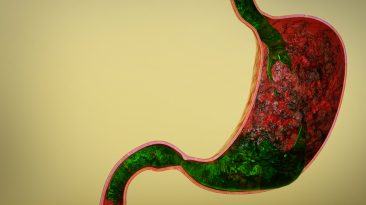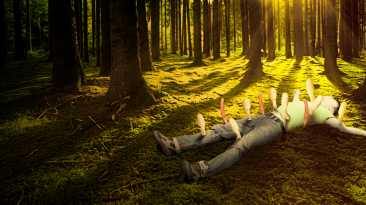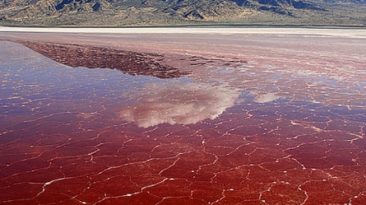Feel like upping the stakes of your late-night skinny dips? Welcome to Lake Nyos, one of the most dangerous lakes on the planet. Here, your cannonball might just take thousands of lives. What makes Lake Nyos so deadly? How much damage could it cause? And how bad a splash would you make by falling in it?
In the North-West Region of Cameroon, Africa, over a volcanic crater, lies Nyos. A small lake with depths of about 210 m (689 ft). Crater lakes like Nyos tend to release carbon dioxide due to volcanic activity deep below. Usually, this carbon dioxide dissipates slowly as the lake naturally shifts. But if the lake stays still enough the gas dissolves into the water and continues accumulating there, steadily turning it into a ticking time bomb.
So what would happen if that water were suddenly disturbed? Nyos is one of only three lakes known to accumulate deadly levels of carbon dioxide. Agitating such a lake could cause something called a limnic eruption. But let’s not get too ahead of ourselves just yet. You have a front-row seat to this catastrophe. And without even knowing it, you’d be the trigger of a major disaster.
As your body sank into the deadly waters of Lake Nyos, the dissolved carbon dioxide would rise to the surface. The lake would start to bubble. And these bubbles would cause even more turbulence. Have you seen the famous Diet Coke and Mentos eruption? Yep. That would be you. A 90 m (295 ft) water jet would explode into the sky, sending you flying as high as Big Ben in London.
We’ll say you’re lucky enough to survive the drop, but you’d still have all the carbon dioxide to deal with. In 20 seconds, all of the accumulated gas would be unleashed in a cloud over 1 km (0.6 mi) wide. It would spread as far as 25 km (16 mi) away from the lake. And it would travel at a speed of up to 48 km/h (30 mph), silently choking most living creatures in its path.
If instead of soaking in Nyos you were in a village nearby, you’d hear a strange rumbling sound, followed by the sight of a white mist rising from the lake. The deadly gas cloud would then usher in a gust of wind, putting out any fire that might be around you. This is because carbon dioxide gas is heavier than air, and at high concentrations it displaces oxygen.
No oxygen means no combustion and no fire. But it also means that you wouldn’t be able to breathe. You would drop dead after a single gasp of air. This is exactly what happened in 1986, when a landslide or an earthquake triggered a limnic eruption on Lake Nyos. In total, 1,746 villagers and 3,500 livestock instantly died. No one was there to witness how its usually serene blue waters turned red from all the iron churned up from the bottom.
Still up for a swim at the most dangerous lake on Earth? Well, the Lake Nyos disaster happened when the concentration of carbon dioxide in the lake was at its highest. And since 1986, some safety measures have been taken to avoid this happening again. Like a pipe at the bottom of the lake that now allows the gas to escape safely.
I still wouldn’t recommend risking your life for this experiment. Even with some of the gas being vented, Nyos just has way too much carbon dioxide. Maybe you could push your luck by going for a dip at another dangerous lake, Natron. Hint, it could turn you to stone.
Sources
- “Lake Nyos”. 2022. atlasobscura.com.
- “What Is A Limnic Eruption, Which Threatens The Congolese City Of Goma?”. 2021. economist.com.
- “Exploding Lakes – Scientific Scribbles”. 2012. blogs.unimelb.edu.au.
- “How A West African Lake Killed 1800 People—And How It Could Happen Again”. 2021. mentalfloss.com.
- “Defusing Africa’s Killer Lakes”. Kevin Krajick. 2003. smithsonianmag.com.


























